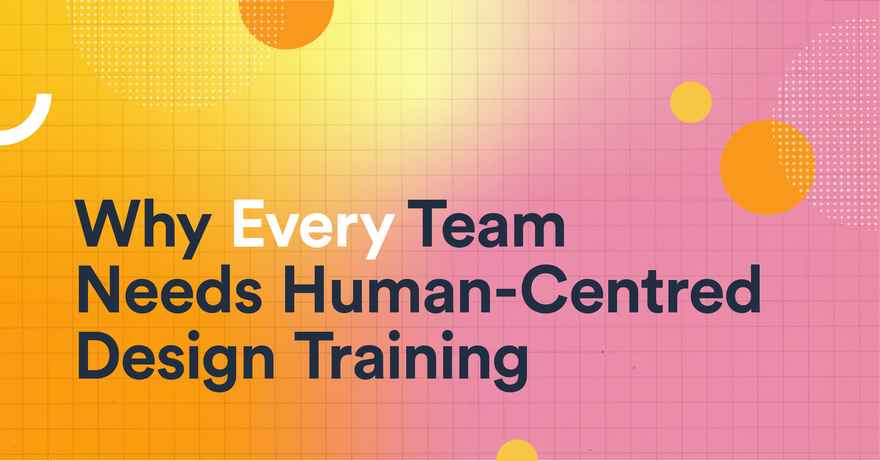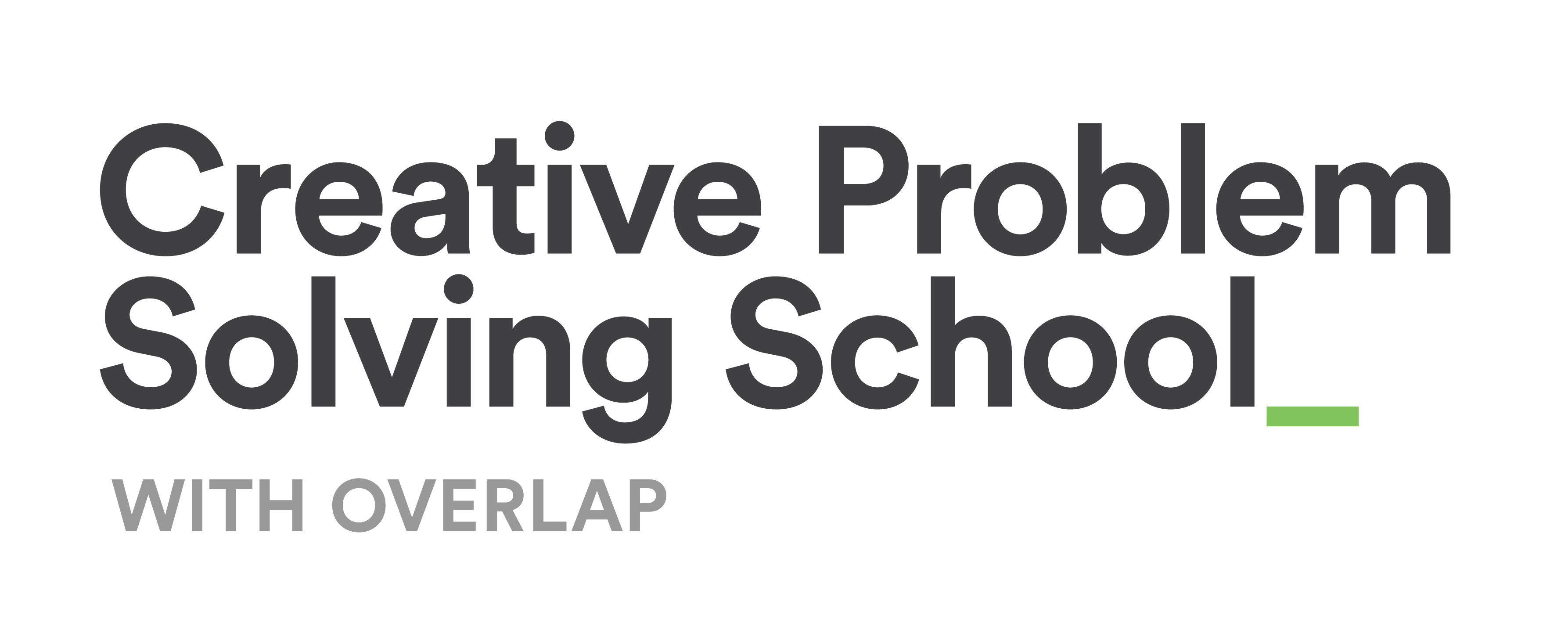Why Every Team Needs Human-Centred Design Training

Human-centred design puts the individuals your organization or business serves at the centre of every product, service, or decision you make. This means better solutions and better results for your team, customers, clients, stakeholders, and community at large. Human-centred design training can help your team adapt in a rapidly evolving world, solve complex problems, and design products or services that leave a long-lasting positive impact.
Here are seven ways your team and overall business can benefit from human-centred design training.
What is Human-Centred Design?
Human-centred design is a term often used interchangeably with design thinking; it’s a collaborative, iterative, and empathy-driven approach to solving complex problems. It’s not a buzzword, an exclusive skill, or a natural ability. It’s an accessible, buildable skill that everyone can learn and apply to their industry.
There’s no one set way to practice human-centred design; it encompasses a wide range of tools and problem-solving methods.
You’re practicing human-centred design whenever you:
- Design products or services with people’s needs in mind
- Introduce empathy into problem-solving
- Prototype ideas early and gather feedback
- Collaborate with others to unravel complex problems
Regardless of your industry, your organization’s ultimate goal is to help people. Human-centred design is all about finding the best way to do that. Instead of finding solutions that should work, human-centred design empowers you to find solutions that will work for all stakeholders.
Why Teams Need Human-Centred Design Training
Human-centred design isn’t exclusive to designers. Everyone can learn how to do it. The following are seven reasons your team can benefit from human-centred design training.
1. The World is Changing Faster Than Ever Before
Change is a constant we can all count on, but the world is changing at a more rapid pace than ever before.
How many major changes did your own workplace go through in the last two years alone? Technology, the economy, societal norms, customer and employee expectations, as well as events in the world at large are evolving almost by the day.
Change is inevitable, which means organizations, businesses, teams, and individuals need to learn how to adapt to meet the needs of their customers. With human-centred design, your team can learn to work with change—not against it. This training provides your organization with the tools you need to evolve and adapt in the face of rapid change.
2. Businesses Need to Solve Complex Problems
Who doesn’t love a quick fix? A light bulb burns out? No worries, screw in a new one. You feel a chill? Throw on a sweater. Spill some milk? Don’t cry—find a paper towel. Climate change? No worries, well… maybe if we… Okay, so some problems are definitely too complex to solve with simple solutions. Complex problems require solutions that deeply consider everyone involved.
Many of the problems businesses face are complex—there isn’t always a quick fix or a clear path forward. Business leaders and teams need to look at these problems from every possible angle to ensure their solutions don’t cause more problems. Complex problems are multi-layered and affect a wide range of people. Oftentimes, the people involved have competing interests, skills, and values, so a solution that works for some people won’t work for others.
Human-centred design promotes a deeper understanding of the problem as well as the individuals who are affected by it. With human-centred design techniques, teams of all sizes can tackle the complex problems that so many businesses face while keeping their focus on the human beings at the heart of the problem.
3. Agile Businesses and Teams Can Survive the Unexpected
You can't predict the future, but you can prepare for it by considering its possible outcomes. This enables you to better respond and adapt in the face of extreme change.
How prepared are you and your team for the unexpected? How quickly and effectively was your business able to adapt when met with the COVID-19 outbreak in early 2020? Your ability to adapt often indicates whether or not a business is able to survive a crisis.
Adaptability is a skill that’s sought-after by businesses, and there’s a measurement for it: adaptability quotient (AQ). Similar to your IQ (intelligence quotient) or EQ (emotional quotient), your AQ is a measure of your adaptability.
Human-centred design training builds adaptability skills, helping individuals and the businesses they are a part of make effective decisions, embrace change, and survive the unexpected.
4. Not Prototyping Early and Often is Risky and Costly
The sooner you can begin prototyping and gathering feedback, the better. This is especially important for product design, but the principles are applicable for any business decision.
Let’s say you’re designing a brand new type of pen. You work tirelessly on the design, test it in-house, and then begin production. Your product gets out to your customers, but it turns out they all prefer blue ink over black ink, and they have no interest in a pen without a retractable tip. You now have a warehouse full of pens that don’t meet your customers’ basic needs and preferences. You’ve expended a great deal of resources, and you’re back to square one. Prototyping would have provided crucial feedback and insight into these potential issues much earlier when there was still time to course correct.
Prototyping and testing take time, but it’s well worth the investment. Understanding how your audience will use your product (and if they have a need for it at all) will save you time and money; plus, your customers will be much happier.
This methodology doesn’t only apply to products. Any service or idea can be prototyped so that you can learn more about your audience’s needs and how your decisions might affect others.
Human-centred design training reinforces the importance of testing early and often. It provides teams with the tools, strategies, and methods needed to effectively prototype, gather feedback, and make adjustments to better align with real people’s needs.
5. Understanding Your Customers is Just Good Business
Human-centred design is all about understanding people. The methodology focuses on tailoring designs and decisions to the needs of real human beings. In order to do this, teams need to know their customers inside and out, including what they want, what they need, and how they interact with the world.
The more you know about your audience and the deeper you go beyond surface-level stereotypes, the better you can serve them.
Human-centred design teaches teams how to better understand the people using a product or service or those who are affected by the decisions your organization makes. It enables you to walk in other people’s shoes, promoting empathy-driven decision making.
Understanding your customers allows you to tailor every aspect of your organization to best suit them—and your prioritization of customers will not go unnoticed. Your customers, clients, and stakeholders will be happier; they will keep coming back for more because you continually meet their needs and exceed expectations.
6. Go Above and Beyond as a Brand or Organization
With human-centred design training, you can go above and beyond to meet your customer, client, or stakeholder needs. People expect a lot from the brands they choose to do business with. Human-centred design training will help you stand out as an organization, no matter your industry.
Why should someone choose to work with you? Because you’ve dedicated your organization to rigorous training to improve creativity, collaboration, empathy, problem-solving, and so much more. Everything you learn in human-centred design training can be used to serve your customers better.
7. Training is an Impactful Investment
Your team is your most valuable business asset. Training is an investment in your team, and it lets them know how valuable you believe they are.
Employees who feel valued and can see the investment you’re making in them personally are more likely to continue working for your company. Plus, group training helps teams bond , which will keep team members from seeking work elsewhere.
Training builds the skills of your workforce while providing incredible team building potential. A stronger, more agile team that understands the fundamentals of human-centred design benefits the company and its customers.
Human-Centred Design Resources
Want to begin your training right away? Below are some of our favourite guides, tools, and books to get you started.
- 7 Decision Making Tools for Reaching Group Consensus
- 12 Powerful Idea Generation Techniques
- 75 Design Thinking Tools and Resources Explained
- Design Thinking Process Cards
- The Design of Everyday Things
- Gamestorming: A Playbook for Innovators, Rulebreakers, and Changemakers
- Change by Design: How Design Thinking Transforms Organizations and Inspires Innovation
- Conscious Creative: Practical Ethics for Purposeful Work
Begin Your Human-Centred Design Training
Overlap’s Creative Problem Solving School was carefully crafted to bring human-centred design training to individuals, teams, and organizations. Learn how to work better together, understand your customers, and navigate complex challenges with our wide range of courses. Each course includes practical and engaging materials that will leave you inspired and well-equipped to solve whatever complex problems come your way.
We offer live, virtual, in-person, and (soon!) self-serve formats for all of our courses. If you’re new to human-centred design, we recommend starting with our Intro to Human-Centred Design (101) and Exploring Complex Problems (201) courses. Browse our full selection of courses, which range from beginner to intermediate to advanced.
The Creative Problem Solving School is developed and managed by Overlap, a design consultancy putting people at the centre of our work. We’re passionate about sharing our human-centred design methods with the world because we believe in better workplaces, better teams, better communities, and better solutions. To keep up with the latest training schedule, new courses, and free resources, follow us on social media and sign up for our monthly newsletter.

0 comments
Leave a comment
Please log in or register to post a comment